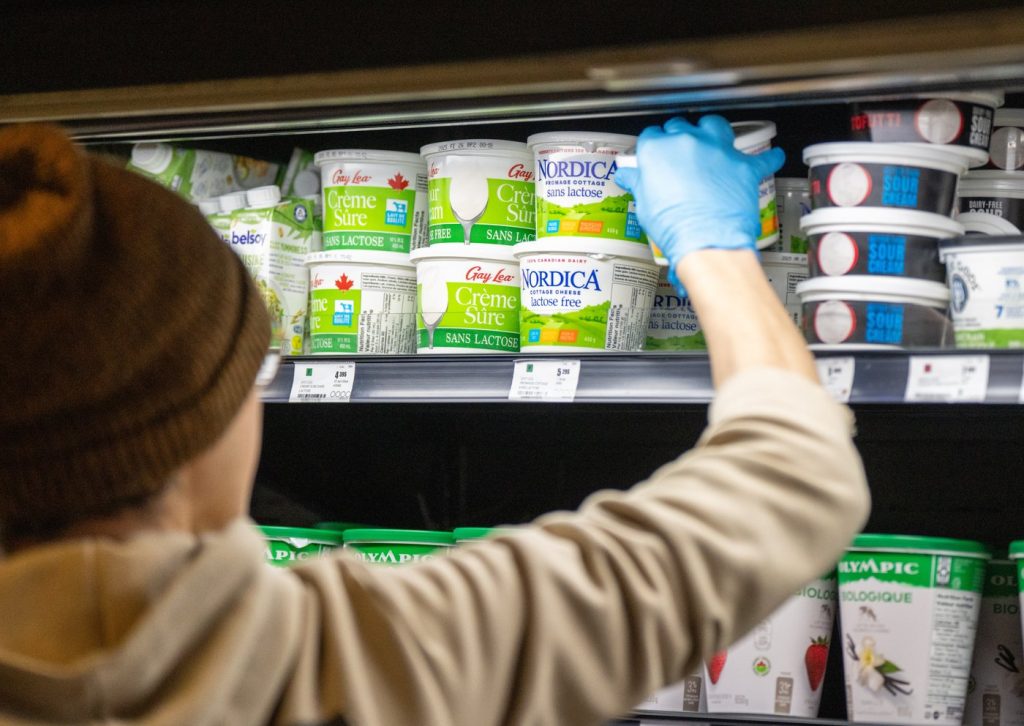Shoppers have recently embraced the buy Canadian sentiment, particularly following U.S. President Donald Trump's announcement of 25 percent tariffs on all Canadian goods, which took effect on Tuesday. In response to these tariffs, many Canadians are increasingly committed to purchasing homegrown products. With Canadian retaliatory tariffs on $30 billion worth of American goods also in play, consumers are inspired to support their local economy.
As the demand for Canadian-made products rises, shoppers may notice numerous items labelled as "product of Canada" or "made in Canada." However, questions arise regarding the true meaning of these labels and whether a Maple Leaf sticker can genuinely indicate Canadian origins. Below is a detailed explanation of what these labels signify.
Product of Canada
According to the Canadian Food Inspection Agency (CFIA), a "product of Canada" label means that all, or nearly all, components related to food, processing, and labor used to create the product are Canadian. Specifically, this implies that the food was grown or raised by Canadian farmers and later processed and packaged in Canada. However, products can include a minimal fraction of imported ingredients, such as spices, additives, vitamins, and flavorings. For non-food items, the Competition Bureau stipulates that the label can only be used when at least 98 percent of the production or manufacturing costs are incurred in Canada.
Made in Canada
The "Made in Canada" label can be applied to products if the last substantial transformation occurred within the country. For instance, in the case of pizza, the processing of various components such as cheese, dough, and sauce qualifies as substantial transformation. For non-food products, this label requires that the last significant transformation happens in Canada, with at least 51 percent of production or manufacturing costs being incurred domestically. Additionally, firms that use this label must disclose whether the product is made from imported or a combination of imported and domestic parts.
Canadian
The term "Canadian" is treated similarly to "product of Canada" by the CFIA. It implies that nearly all major ingredients, processing, and labor involved in creating a food product are Canadian. An example would be a frozen lasagna that meets the criteria for both labels if it includes predominantly Canadian components.
100% Canadian
The designation "100% Canadian" can be used when a food product or ingredient is entirely sourced and processed in Canada, with all labor also being domestic.
A Maple Leaf
The presence of a Maple Leaf on food packaging does not guarantee that the product is entirely or partially Canadian; it is often employed to signify a "product of Canada." To avoid misleading consumers, the CFIA recommends that food companies provide a domestic content statement alongside the Maple Leaf, although compliance with this suggestion is inconsistent among firms.
Produced or manufactured in Canada
Terms like "produced" or "manufactured" in Canada are understood by consumers to equate with "made in Canada," and therefore must adhere to the same requirements.
Local
For a product to be advertised as "local," it must be produced in the province or territory where it is sold or marketed across provincial borders within 50 km of its originating territory, as stated by the CFIA.
The blue cow
In the dairy sector, products often display a blue cow logo, indicating they are made with 100 percent Canadian milk and milk ingredients, as affirmed by the Dairy Farmers of Canada.
Meat and poultry
Meat can only carry the label "product of Canada" if it originates from Canadian animals that were slaughtered within the country. Animals must be born, raised, and slaughtered in Canada to be classified as Canadian, or in the case of feeder cattle, must have spent at least 60 days in Canada prior to slaughter, according to the CFIA.
Fish and seafood
Wild fish and seafood may be labeled as "product of Canada" if they are caught in Canadian waters and processed in a Canadian facility using Canadian ingredients. Farmed fish and seafood must also be raised in Canada, with subsequent processing occurring in a Canadian establishment employing Canadian components.
Dairy and eggs
Eggs produced by imported hens and milk from imported cows can still use the "product of Canada" label, provided that the eggs are laid and the cows are milked in Canada.










